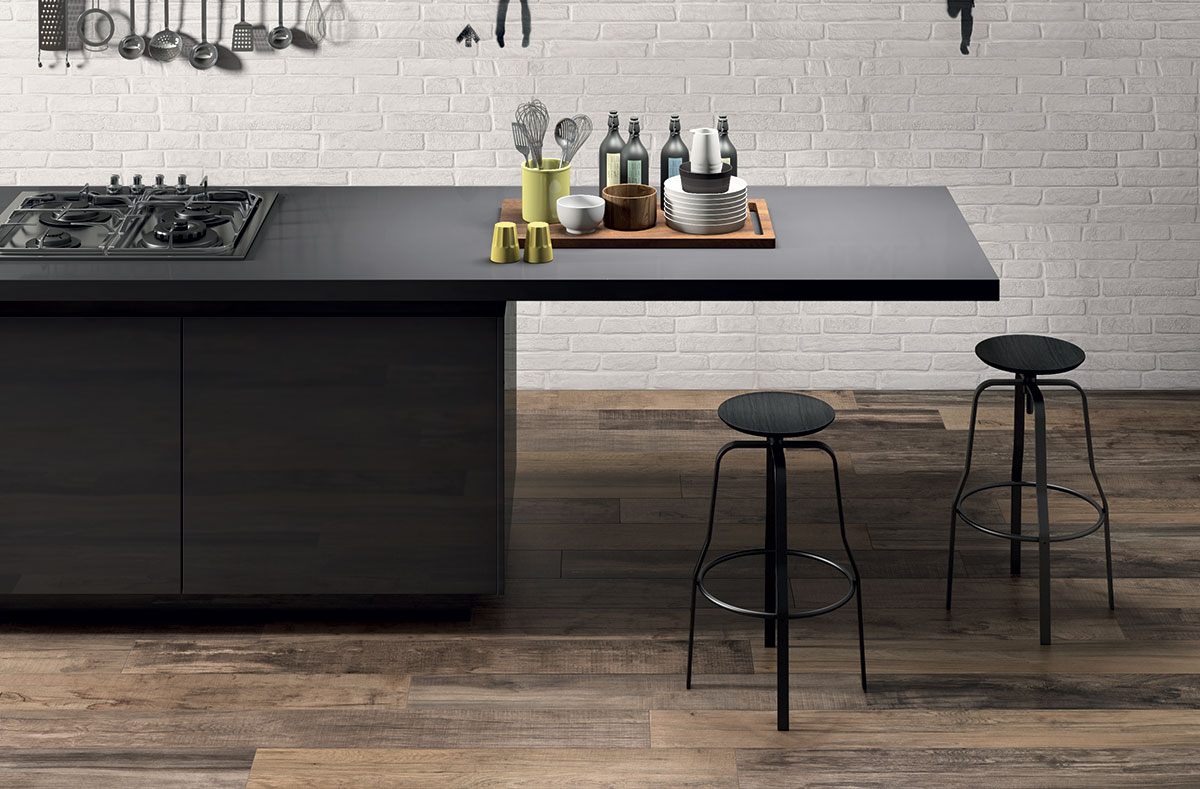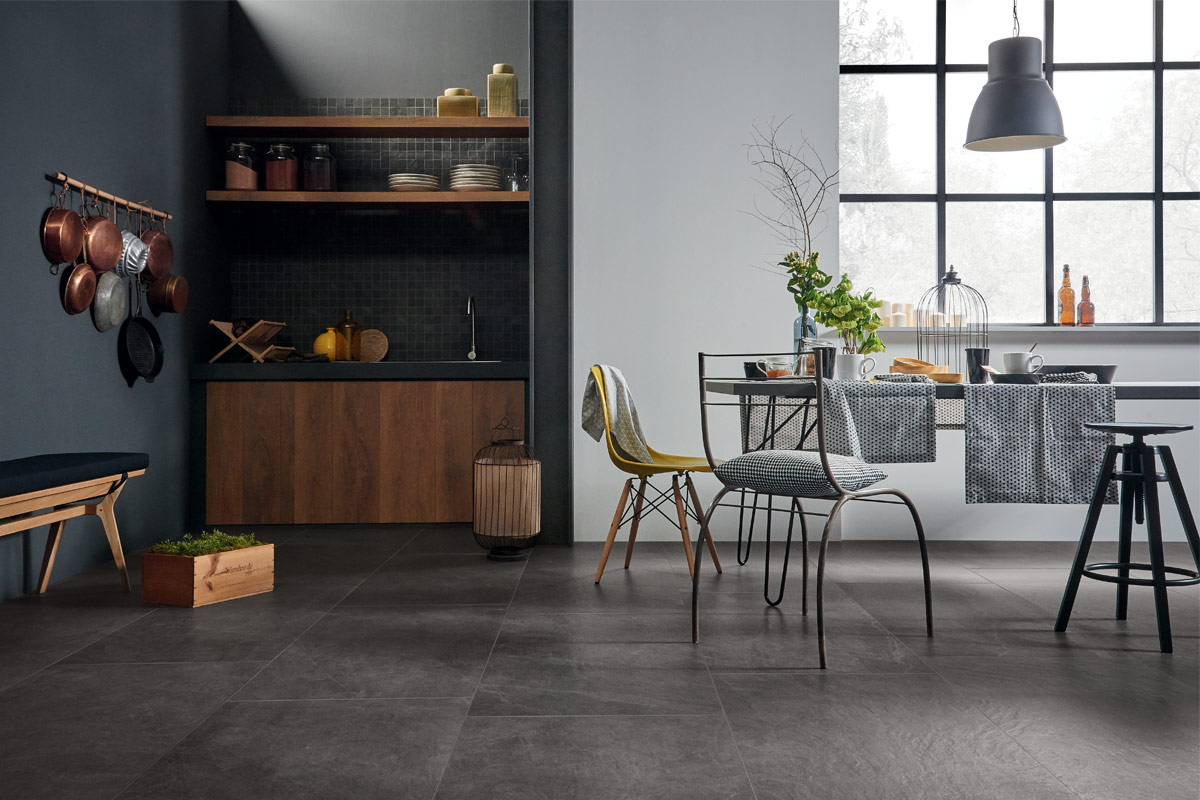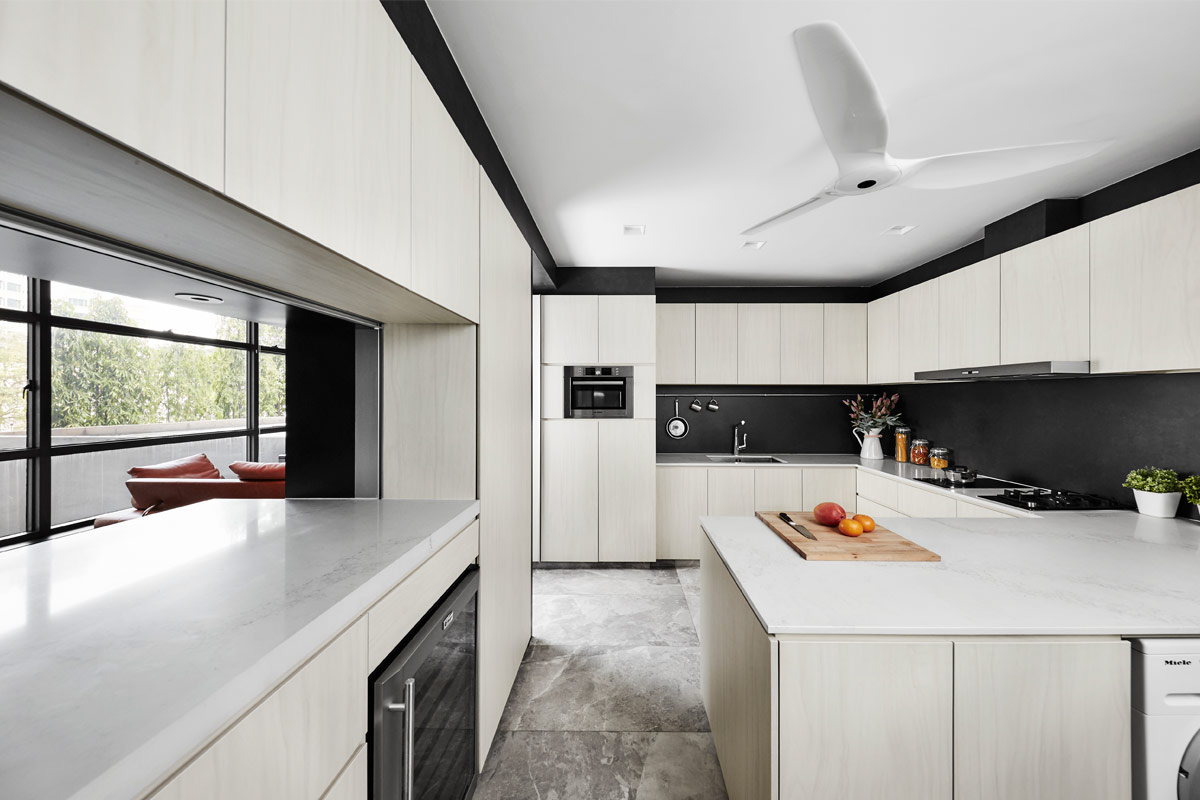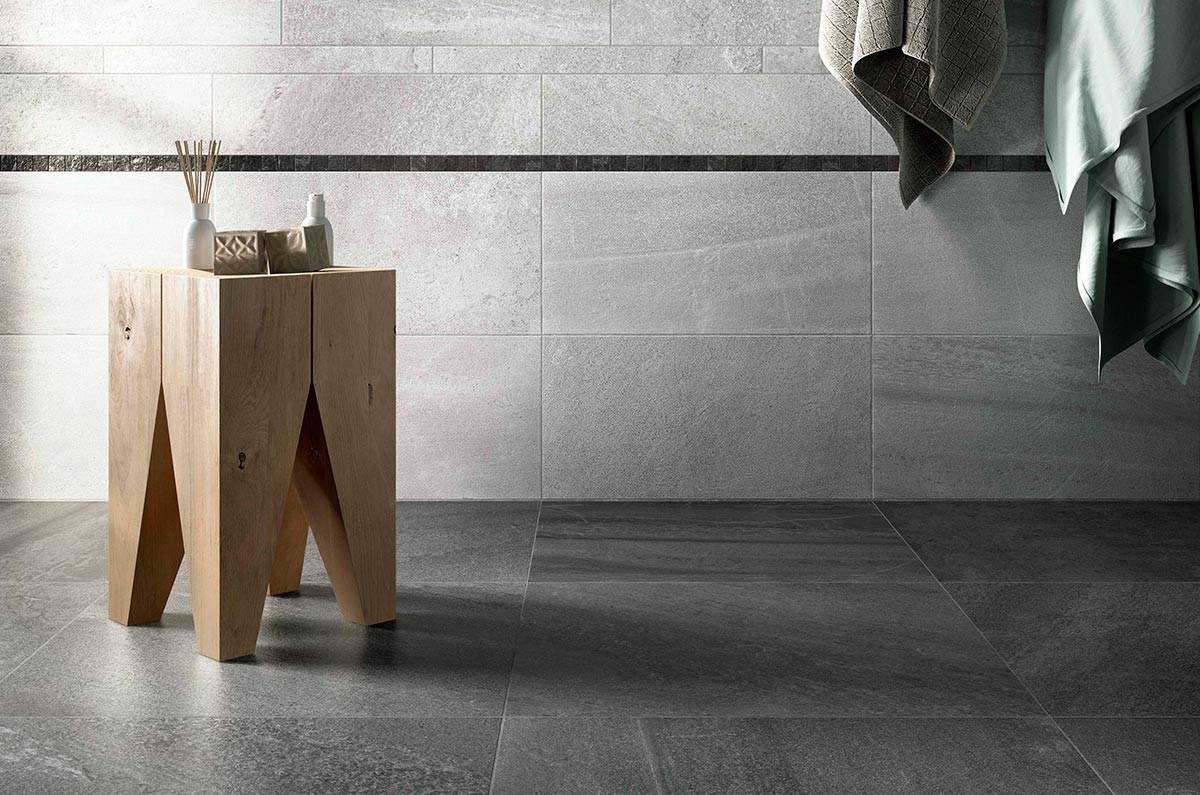While it’s true that floors are meant to be stepped on, the two busiest parts of home bear the brunt even more. Between the heavy foot traffic, heat, hard knocks and spills that kitchens are subjected to, or the constant damp conditions of bathrooms, ill-fitted finishes could degrade, warp or even pop out. There’s a reason why design practitioners have been coming back time and again to the ever-reliable tile. This traditional material might date centuries-old but it has persisted as one of the more enduring surfaces around. In fact, hardworking cooking spaces and splash-prone areas have never met such a worthy opponent. From ceramic and porcelain to stone tiles, don’t be floored by the innumerable choices in store. We help you narrow down the type that fits your places of function.
Friction is your friend
In the most utilitarian areas of the home, safety is a priority. This is why when it comes to matters underfoot, friction is your friend. Not all but most porcelain and ceramic floor tiles are assigned slip ratings. In layman’s term, this simply grades how rough – or resistant to slipping – the surface is. The ratings span the scale from R9, an indicator that the tile is smooth yet matte, right through R11, a grade that signifies a significantly coarse texture.

Image credit: Hup Kiong
With stone tiles, slip ratings can be altered according to the finish and how it was treated. But you have to be discerning as to the type of stone you wish to lay on the floors of your kitchen and bathroom. Steer clear of polished marble; it’s slippery and absorbs stain easily. Slate and granite, however, fare well in wet conditions. Just be sure that they’ve been treated with a textured finish to keep your space safe and slip-free.
Dark colours will mask stains
Go too dark and every speck of dust will show; choose all white and you’ll spend your days frantically wiping every iota of grime. Colours that sit in the middle – like grey or ash tones – can sneakily mask grime (or soap scum, depending on your location) and ensure stains appear less glaringly obvious in the two frequently visited parts of the home. What’s more, these easygoing hues mingle well with other colours, making it easy to mix and match according to your whims.

Image credit: Hup Kiong
If you prefer a bit more flair, tiles that are textured – as opposed to patterned – make a sounder solution for areas of utility. Think rough-hewn stone pieces or porcelain or ceramic tiles that emulate wood or concrete. Not only are they great at camouflaging stubborn stains, their weathered appearance means the effect of time would nary have an impact on their façade.
Go for durable materials
While finishes for the bath space need to weather moisture well, those in the kitchen have to be equipped to handle more. Porcelain and ceramic tiles are incredibly resilient and provide effective protection against potential hazards day after day. But take note, not all tiles are made equal. Ceramic may be part of the porcelain family, but it’s not as dense as porcelain. Porcelain, on the other hand, comes in full-bodied or glazed options. The former contains porcelain clay the entire way through the tile – making it tough enough for outdoor use.

Image credit: akiHAUS
Stone, on the other hand, is a durability champ. After all, these tiles were essentially sliced from boulders and slabs of rocks. However, not all rocks can tolerate hard knocks. Soft stones like marble are quick to degrade and need special sealing agents. It’s best to leave these materials for the walls. Common stones used for floors include slate, granite as well as travertine. With proper sealing and maintenance, they can easily last for spans.
Keep it clean
Kitchens that see a lot of action should be swept or vacuumed as well as mopped regularly. This could be every other day or weekly – subject to how frequently you cook. When spills happen, always wipe them up immediately. The issue isn’t solely with the tiles, it’s the grout you have to avoid staining. A nifty way to protect areas susceptible to spills is to add mats in places of concern. This includes zones in front of the sink or cooktop. Deeper within the damp confines of the bathroom, many homeowners face common issues with one of the biggest grime culprit: soap scum. Regular preventive measures are necessary because removing it gets a lot tougher if it is allowed to build up and harden. If time permits, wipe down tiles with a squeegee after each shower.

Image credit: Hup Kiong
This was adapted from an article originally written by Fidz Azmin published in the June 2018 issue of SquareRooms.



